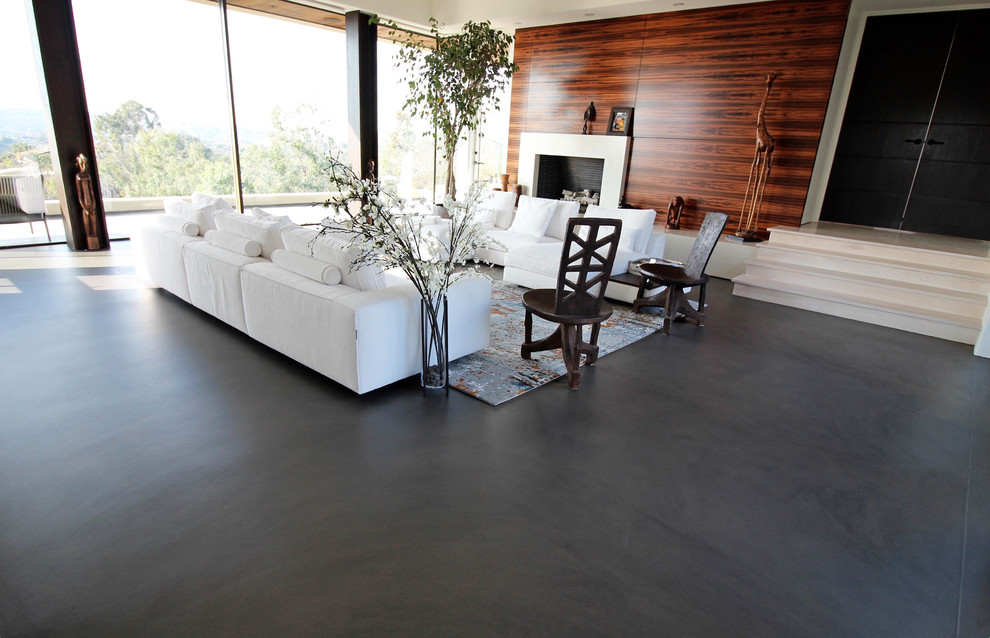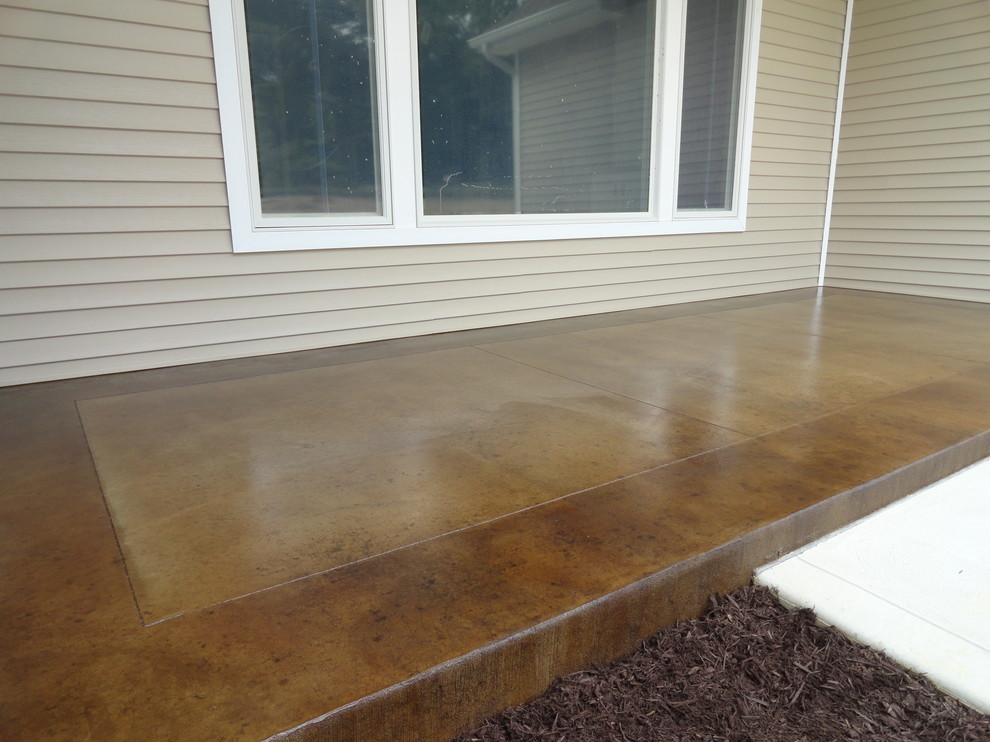Sealing your concrete not only preserves and extends its lifespan but can also add to its beauty. Both indoor and outdoor concrete should be sealed against dirt and moisture, and this can be done in several ways.
Each method of sealing concrete has its advantages and disadvantages. Some are more appropriate for outdoor concrete, while others are better for indoor concrete. Below, we’ll present three popular options for sealing and finishing concrete.
Epoxy Concrete Flooring Coatings
Hands down, epoxy floor coatings are the most beautiful way to seal concrete. You can choose from dozens of different finishes and colors, ranging from granite, marble, and abstract designs. You can even choose metallic pigments and chips for a deep, glowing finish.

Photo by Life Deck Coating Installations
While epoxy floor coatings can be used outdoors, it’s typically used indoors for garages and other floors. The process will take several days, beginning with grinding the surface of the concrete and repairing any cracks. Next, the concrete is stained and texture chips are added. Finally, a clear coat finishes the process.
Acrylic Render
An acrylic render mixes acrylic into a thin concrete mix. It can be tinted in nearly any color. This is then spread over a concrete wall or slab with a trowel. Acrylic render is strong and flexible, making it very appropriate for exterior walls. This flexibility also means that it’s unlikely to crack.
![]()
Photo by Tricon Developments Pty Ltd
An acrylic render is a fabulous alternative to paint for concrete and concrete block walls. Also, sand grains can be added to acrylic render to create varying degrees of texture. By using an acrylic render on your exterior block or concrete walls, you may not need to paint for decades. It’s a great option for any type of concrete or block wall.
Concrete Staining
Concrete staining is a popular option for driveways, patios, and pool decks. First, the concrete is pressure washed for deep cleaning. Next, comes a moisture-proof primer. Finally, the concrete receives a natural-colored stain and a durable top coat. The final finishing touch is a sprinkling of sand for a slip-resistant finish.

Photo by Dancer Concrete Design
While concrete staining could be used in a garage, it’s not as oil-resistant as an epoxy floor coating. Typically, concrete staining is used on walkways, patios, and pool decks, where oil stains from vehicles are unlikely.
Sealing and protecting your concrete only makes sense. Clean, beautiful, finished concrete not only makes your home more beautiful, but also adds value to your property.
Author Bio
Anita Ginsburg is a freelance writer from Denver, CO. She studied at Colorado State University, and now writes articles about health, business, family and finance. A mother of two, she enjoys traveling with her family whenever she isn’t writing. You can follow her on Twitter @anitaginsburg.
The post How to Seal and Protect Your Concrete for an Extended Lifespan appeared first on YourAmazingPlaces.com.
from YourAmazingPlaces.com https://ift.tt/hGDuxfy








0 comments:
Post a Comment